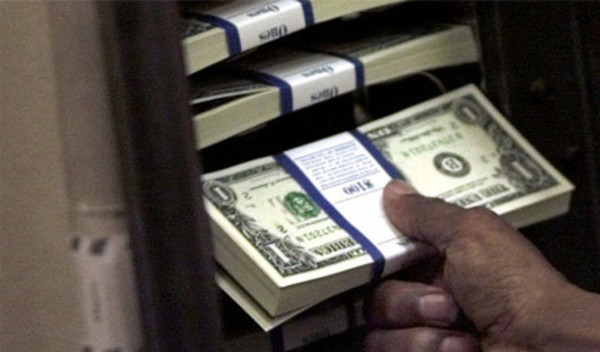

Sanlam’s Craig Veysey has halved his exposure to the US dollar in a contrarian bet against the flood of investors piling into the greenback.
Betting on a rise in the value of the dollar versus other major currencies has become by far the most consensus trade among investment managers, according to a recent survey from Bank of America Merrill Lynch.
Investors in the US currency point to the country’s strong growth prospects – compared to slowing growth elsewhere – and the expected rise in its interest rate, as factors supporting the dollar rally.
But although Mr Veysey, who manages the SPI Strategic Investment Grade Bond fund, said he agreed with the long-term positive view on the dollar, he had become concerned with all the money flowing into it.
This unease had prompted him to slash his exposure to the greenback from 20 per cent to 10 per cent.
“The sterling/dollar trade is now a lot less attractive from a short-term perspective, mainly because many have bought into it,” he said.
Mr Veysey said most speculative investors now had “significant short positions” on the value of sterling against the dollar, which meant those investors would make money if the UK currency weakened relative to the US’s.
Due to the weight of money already having flooded into the sterling/dollar trade, Mr Veysey said he found it difficult to see where the money would come from to push it further and so had decided to make the tactical trade in case a sentiment switch prompted a quick exit by investors.
Since the middle of 2014 the value of sterling has fallen by 11.3 per cent versus the dollar. A pound is now worth 1.51 dollars, whereas it was worth 1.71 dollars at the end of June 2014.
In spite of his tactical decision on the dollar, Mr Veysey said he still had a long-term strategic positive view on the US currency, which was why he generally looked to have between 10 per cent and 20 per cent of his fund in the dollar.
He said part of his positive view on the dollar derived from a negative view on sterling, which he puts down to the UK’s current account deficit, which was worse than the US’s, and the possibility of the UK leaving the eurozone if a referendum was held after the upcoming election.
Sanlam SPI Strategic Investment Grade Bond reached its three-year anniversary this month and has delivered a total return of 27.6 per cent since launch, compared to the sector average return of 21 per cent, putting the fund in the top quartile of the sector for performance.
For much of its short life, the fund suffered relative to the sector due to its low weighting towards high yield, but its focus on investment-grade and government bonds has paid off in the past year as higher-rated debt outperformed.



